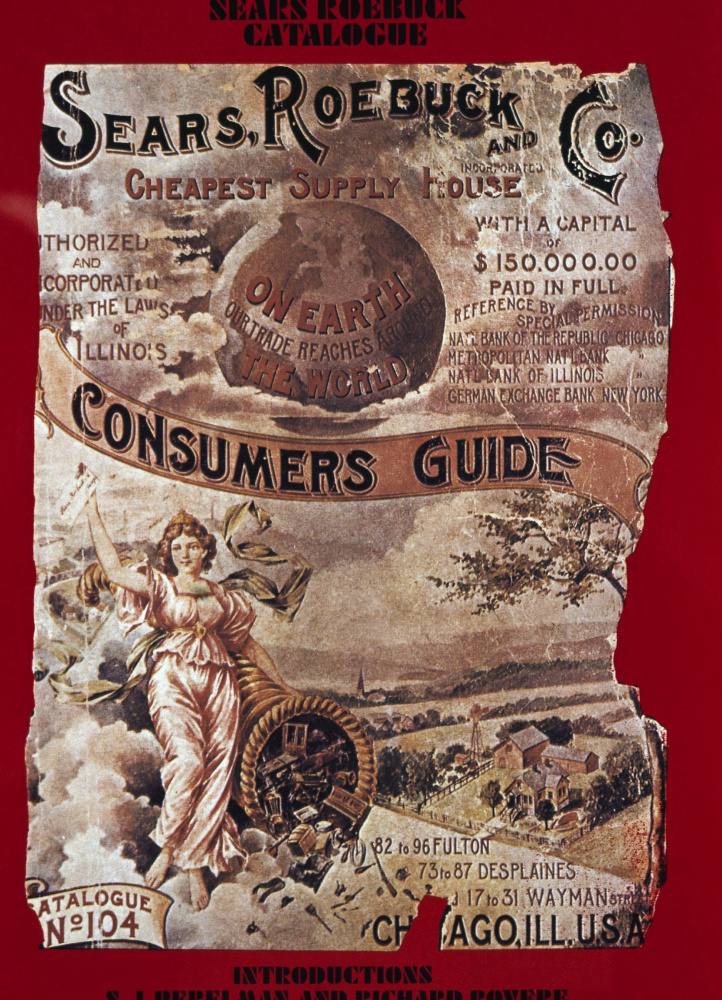HARPSWELL — Suppose you heard that Amazon was faltering and faced bankruptcy. You might be stunned, because Amazon is a huge and powerful company that has almost become a national institution.
That’s what it’s like these days for Sears. At one time, its catalog was the equivalent of Amazon’s website, offering an unbelievable variety of goods that would be delivered right to your home. Everybody knew Sears.
Like Amazon, which first became known for selling a single product – books – Richard Sears started his company by selling a single product – watches. He quickly learned there was a vast market for mail order sales, especially in a country where most people lived in rural areas, far from market towns.
THE RETAIL BIBLE
The Sears catalog became America’s retail bible. The company founder would offer products that he had never stocked or might not have even understood. When orders flooded in, he quickly sought out suppliers.
Early in the 20th century, he turned the company over to Julius Rosenwald, who created an efficient and well-managed business out of the revolution Sears had launched. By stocking a huge variety of products – Sears even sold houses – Rosenwald made the company dominant in the highly decentralized retail marketplace.
The catalog had led the country to see the market on a national scale. Rosenwald recognized that the country was changing, becoming increasingly urban with many more cars on the road, so he tried to keep ahead of his customers. He began opening brick-and-mortar retail stores.
Eventually, Rosenwald left the company to devote his attention to his historic philanthropy. His successor, Gen. Robert Wood, created a new identity for it.
Sears offered high-quality tools and appliances from its own or closely affiliated suppliers. The stores backed its goods by a strong guarantee of customer satisfaction. The company permeated most parts of American life, even owning a radio station, Chicago’s WLS, whose call letters stood for “World’s Largest Store.”
Having kept ahead of the American retail market, first by developing the “big book” and then by the expansion of stores selling reliable products uniformly across the country, Sears boomed. One out of every 204 people worked for the company. Its sales equaled 1 percent of the national output of goods and services.
In 1973, it opened its new Chicago headquarters in what was then the world’s tallest building, the Sears Tower. But, just as it reached its architectural peak, it began to lose its market perch. At the time, fortuitously, as it turned out, I wrote a book about the company.
MORE CHOICE WANTED
Customers wanted more choice. Sears stocked its signature products, but competing products, often at lower prices, were flooding into the market. It would be decades before the company began carrying a far wider selection of appliances and other items.
Customers cared a lot about price. Discounters began to emerge, often opening stores near the old-line Sears. They offered consistently lower prices, sometimes for lower-quality goods, and the customers, traditionally loyal to Sears, began to shop other stores.
The catalog was outmoded. Once it had ended up as toilet paper in rural outhouses, but with post-war prosperity both the outhouses and the catalogs no longer served much of a purpose. If catalogs were to survive, they would not be “big books,” but small, specialty books, sent to selected audiences. Sears was slow to track the change.
And finally, there was the new version of the catalog – the World Wide Web. The internet offered everything the catalog had, but instantly and updated hourly not annually. Sears came late to electronic marketing.
Though the company might have done better to anticipate change, just as Sears, Rosenwald and Wood had done, its management should not be assigned all the blame for its decline. The world changes, and new market entrants emerge and disappear as it evolves.
When the Sears Tower opened, nobody yet dreamed of the internet, much less Amazon or eBay. Yet these proved to be the agents of change that would help bring down Sears.
As the pace of technological development increases, companies that today stand in the place Sears once occupied will similarly be displaced by enterprises using undreamed-of ways of offering and delivering products to customers.
Someday, in this space, another observer may write the same story about Amazon or about a company that remains to be created by a visionary like Richard Sears.
Copy the Story LinkSend questions/comments to the editors.



Success. Please wait for the page to reload. If the page does not reload within 5 seconds, please refresh the page.
Enter your email and password to access comments.
Hi, to comment on stories you must . This profile is in addition to your subscription and website login.
Already have a commenting profile? .
Invalid username/password.
Please check your email to confirm and complete your registration.
Only subscribers are eligible to post comments. Please subscribe or login first for digital access. Here’s why.
Use the form below to reset your password. When you've submitted your account email, we will send an email with a reset code.